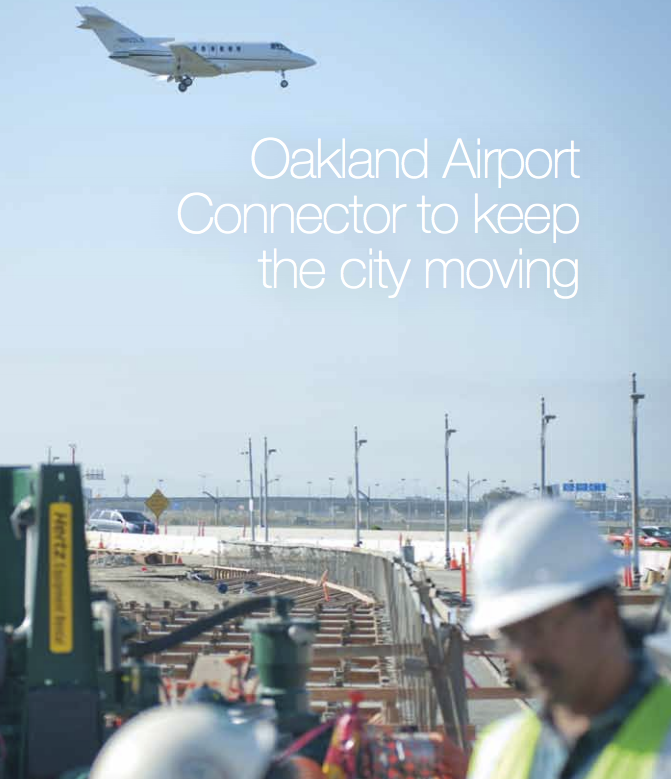Project News
Flatiron Construction’s Oakland Airport Connector Project Will Keep the City Moving

 Concrete columns are rising quickly along the route of the San Francisco Bay Area Rapid Transit District’s long-awaited Oakland Airport Connector, which has been in the works for more than 30 years. Flatiron is constructing a fixed, elevated guideway for the automated people mover, which will provide a 3.2-mile connection between the Oakland Coliseum BART and Amtrak station and the Oakland International Airport.
Concrete columns are rising quickly along the route of the San Francisco Bay Area Rapid Transit District’s long-awaited Oakland Airport Connector, which has been in the works for more than 30 years. Flatiron is constructing a fixed, elevated guideway for the automated people mover, which will provide a 3.2-mile connection between the Oakland Coliseum BART and Amtrak station and the Oakland International Airport.
Currently, travelers who ride BART from cities in the East Bay to the Oakland Airport must exit the train at the Coliseum Station, haul their luggage down the stairs and catch the AirBART bus. AirBART is often delayed as the busses travel along busy Hegenberger Road, causing unpredictable wait times on either end of the route.
“The biggest issue for air travelers is the sheer lack of convenience,” said project manager Tony Inocencio. “A lot of people fly out of San Francisco instead of Oakland because they can take BART, which drops them off right in front of the terminals. This project will offer patrons the very same option here in Oakland.”
The OAC is a design-build joint venture between Flatiron Construction and Parsons, with the main subcontractor, Doppelmayr Cable Car, also holding a 20-year operations and maintenance contract. “Doppelmayr is based out of Austria and is world-renowned for their ski lifts, and they are now using the same technology to develop cable-propelled automated people mover systems around the world,” Tony said. “The OAC vehicles will move about by clamping onto one of the four pinched loop cables that run below them.”
Once Flatiron has completed the alignment’s 136 cast-in-place columns and bent caps, as well as related utility relocation and a 200-foot cut-and-cover tunnel, Doppelmayr will step in to install a prefabricated tubular steel guideway on which the trains will run.
Turner Construction will build the platform portion of the project’s two new stations, as well as the central maintenance and control facility, which has the capacity to become a third station in the future. The driverless trains will depart every four to five minutes, with one train running in each direction and a total ride time of 8.5 minutes.
Flatiron’s dedication to using local and minority contractors was a big selling point in acquiring the job. “The contract listed an 18 percent disadvantaged business enterprise requirement, but Flatiron committed to 20 percent and put programs in place to meet that goal,” Tony said.
Working in an urban area like Oakland often means accommodating the needs and schedules of many different agencies and municipalities.
“Luckily, Flatiron has people with a positive approach, who partner and figure out how to get things done instead of just saying ‘that’s not our problem,’” Tony said.
Flatiron’s previous experience in the Bay Area made the job a natural fit for the company, said Richard Grabinski, vice president and Benicia District manager.
“The OAC project is located right in the heart of our district and is a great fit for our resources,” Richard said. “Knowing the area and the work so well has helped us make a smooth transition into the design-build environment.”
